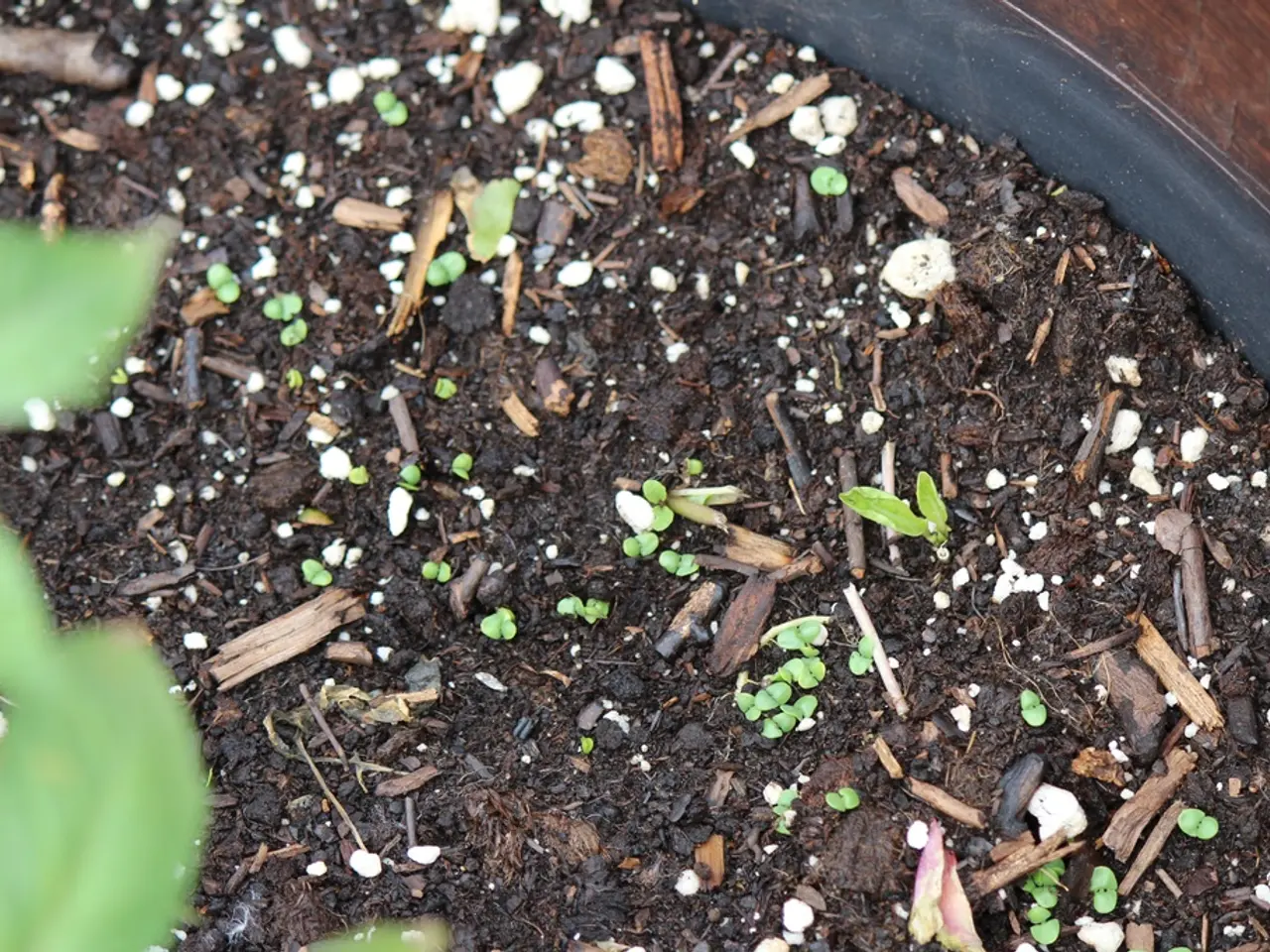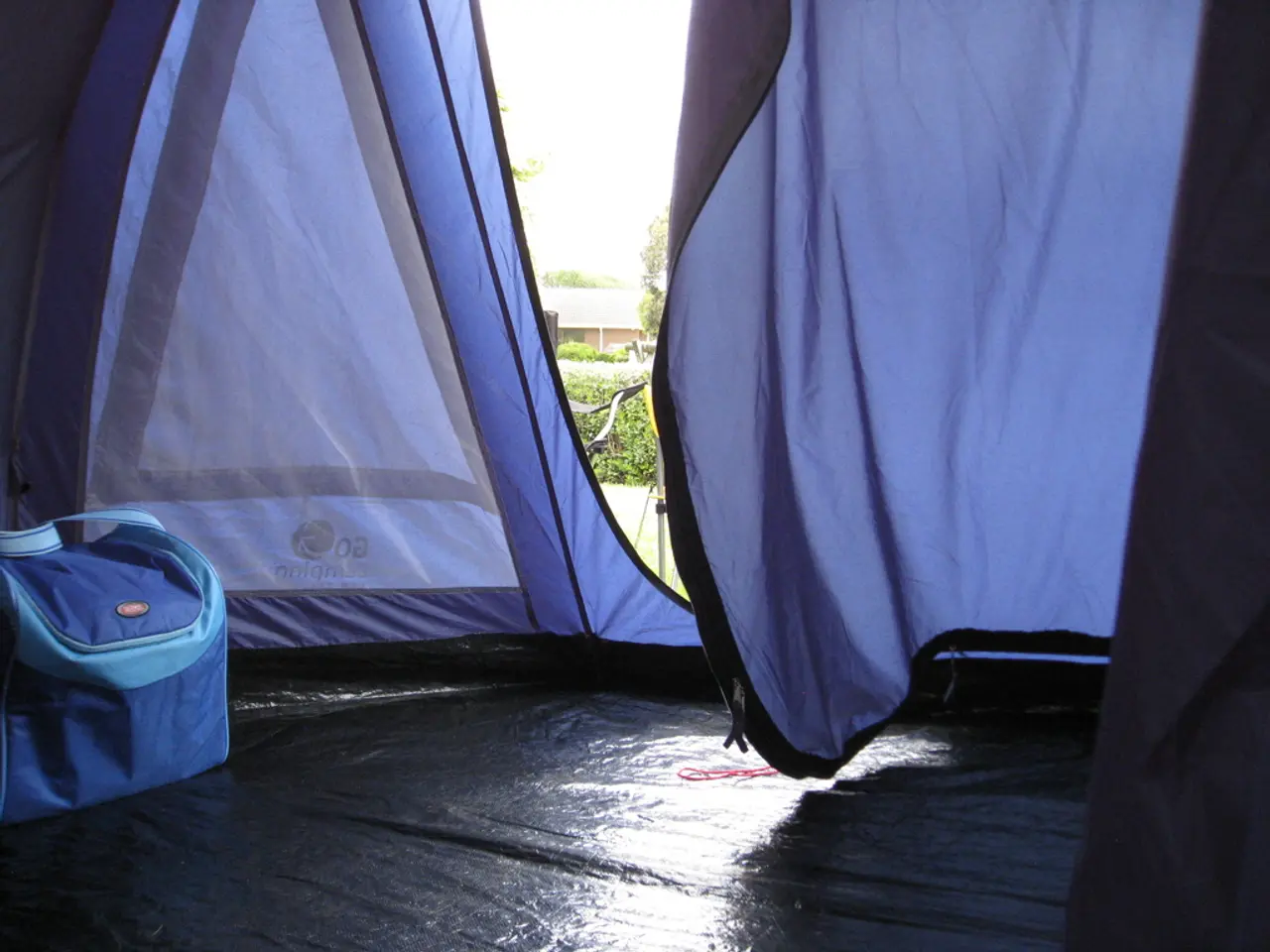Preparing the Ground for Sowing: A Comprehensive Walkthrough
In the pursuit of a thriving vegetable and flower garden, the foundation lies in the soil. To cultivate a healthy, fertile, and well-drained soil bed, follow these steps to prepare your garden for a bountiful harvest.
Tools
The first step in preparing your soil is to gather the right tools. A garden fork or spade for manual turning, which loosens soil without overly disturbing it, is essential. For larger areas, a rototiller or cultivator can mix and aerate soil efficiently.
Preparation
Begin by removing weeds, rocks, and debris to create a clean bed. If incorporating cover crops (green manure), mow or cut them before they seed to add organic matter. Moist soil is easier to work with; water if soil is dry but avoid working in overly wet soil to prevent compaction.
The Process
- Dig or till soil to about 6–12 inches deep to break up compacted layers and improve root penetration.
- Incorporate organic matter such as compost, well-rotted manure, or sphagnum peat moss to improve soil structure, moisture retention, and nutrient content. Peat moss is especially effective for sandy or compacted soils.
- For cover crops turned into green manure, till them into the soil and wait 3-6 weeks for decomposition before planting to avoid nitrogen tie-up.
- Consider sheet mulching or lasagna composting by layering organic materials such as cardboard, leaves, grass clippings, coffee grounds, and garden soil directly on grass or less-prepared areas to create rich beds without extensive digging.
Additional Steps
- Mulch with organic materials (straw, leaves, grass clippings) to suppress weeds, retain moisture, moderate soil temperature, and slowly add nutrients as mulch decomposes.
- Deep water the soil after turning and mulching to encourage deep root growth, which improves plant nutrient and water uptake.
Following these steps ensures a loose, fertile, and well-drained soil ideal for vegetable and flower growth, promoting healthy roots and productive plants.
Additional Considerations
- After incorporating the organic matter, use a rake to chop any remaining soil clods and remove debris.
- Adjust the organic matter you use or add lime or sulfur to the soil if necessary to achieve the desired pH level.
- Loosen the soil further to mix the organic matter with the soil.
- Mulching is the final step in preparing your soil for planting, providing benefits like regulating soil temperature, preventing erosion, and promoting beneficial organisms.
- If the soil is too acidic or alkaline, adjust it by adding lime to raise the pH or sulfur to lower it.
- Loosen the soil with a garden fork or a tiller to break up compacted areas.
- Test the soil pH before adding organic matter to ensure the soil's pH level is suitable for the plants you intend to grow.
- Avoid piling mulch against the trunks or stems of plants, as this will cause them to rot.
- Clear the garden bed or lawn of debris, fallen leaves, and weeds.
- Mulch should be spread evenly across the garden bed, aiming for a layer between 2 and 4 inches deep.
- Avoid using organic matter with a foul odor or an ammonia/sulphur smell.
- When mulching, use organic materials such as tree bark, leaves, grass clippings, compost, and pine needles for the best results.
- Allow fresh manure to age for several months before using it in the garden.
- For new garden beds, a layer of 3 to 4 inches of organic matter is recommended, while for existing beds, a thinner layer of a quarter to 1 inch is sufficient.
- This helps create a healthy environment for plant roots to grow.
- Ensure the organic matter is partially broken-down and has a dark, crumbly structure.
- Adding organic matter enriches the soil, making it more fertile and improving its structure.
- The best time of year to mulch is spring and autumn, especially after spring planting.
- Use a garden fork or a broadfork to mix the organic matter and soil.
- Test the soil pH level using a simple testing kit or a more comprehensive analysis from a university extension lab or professional soil testing lab.
- Fresh manure can burn plant roots and should not be used directly in the garden.
- Use compost, well-rotted manure, or leaf mould as organic matter.
- Apply a two-inch layer of the chosen organic matter to the top of the bed.
By following these guidelines, you'll have a thriving garden that will bring joy and nourishment for years to come. Happy gardening!
By incorporating an organic lifestyle into home-and-garden activities, you can promote soil health. Ensure youale uses eco-friendly garden products such as compost, well-rotted manure, and home-made DIY fertilizers for a sustainable gardening practice. Additionally, remember that gardening is not just about plant growth; it's about nourishing the environment and creating a personal oasis of soil health, flowers, and vegetables that reflect your lifestyle.




